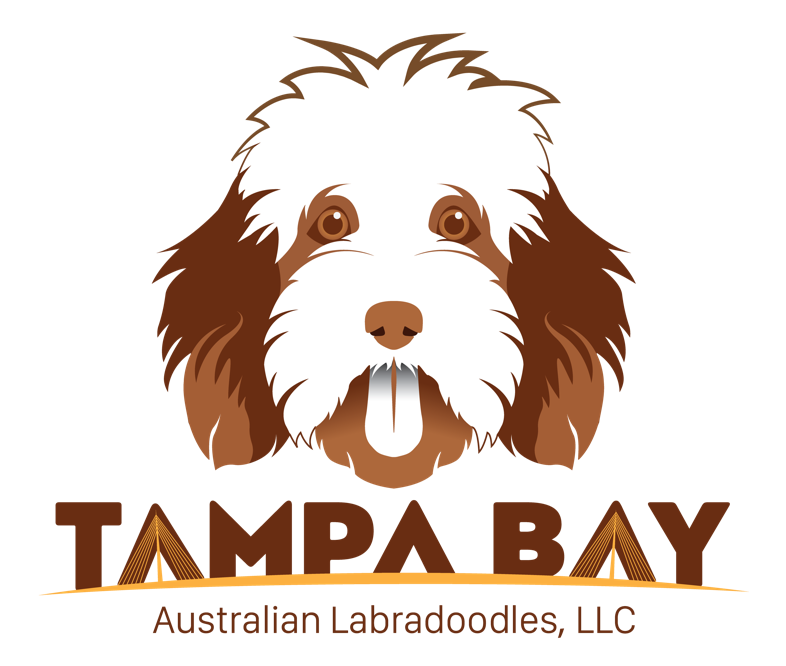
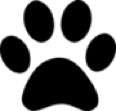
The Only TRUE DOODLE!
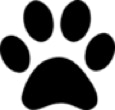
The Australian Labradoodle
An Intriguing History _ How did the Labradoodle get its Name?
The Labradoodle first originated in Australia when the first intentional purpose-bred mating of a Labrador Retriever and a Standard Poodle was initiated by Wally Conran of the Royal Guide Dogs in Victoria Australia. A vision impaired woman in Hawaii needed a Guide Dog which wouldn't aggravate her husband's allergies.
Over a period of two years, they had sent hair and saliva samples from 33 different Poodles across to Hawaii to test for allergic reaction with the lady's husband, but without success. Eventually Wally Conran approached the Manager of Royal Guide Dogs with suggestion that they try crossing one their Labrador Retrievers with a Standard Poodle. He agreed.
The first litter had only three puppies. Hair and saliva samples were sent to Hawaii from all three, but only Sultan's, the white dog, were successful. The other two also went on to lead useful lives, one as a Remedial Dog and the other as a Guide Dog.
There was always a long waiting list of families waiting to puppy walk Guide Dogs, but when these new cross breeds needed homes, no one was prepared to take them on. Wally knew that it was vital that the puppies got the right socialization in a family unit, and once again his ingeniuty came to the rescue. He went to the manager with the suggestion that they approach Channel 9 television station in Melbourne with a story about "the new breed of Guide Dog" and realizing it needed to have a name, he coined the word "Labradoodle". After the show aired on television, the phones rang hot with people wanting to puppy walk this amazing "new breed" of Guide Dog!
Wally Conran bred Labradoodles to other Labradoodles and called the offspring 'Double Doodles'. He then mated Double Doodles to other Double Doodles and th progeny of these matings he called 'Tri Doodles'.
Of the 31 Labradoodles bred at Royal Guide Dogs, a staggering 29 made it through as Guide Dogs....an allocade of unparalled proportion for this new 'breed' of Guide Dog.
When the Guide Dogs had Open Days, people fell in love with the Labradoodles they saw there and The Guide Dog Center was besieged with inquiries as to where they could get one. It wasn't long before there was a huge demand, which was not being met. There was an obvious need for breeders to establish themselves and develop this fascination dog, with the joyful intuitive personality, and the non shedding and allergy friendly coat.
When Wally Conran retired, a country vet in Condoblin New South Wales, Australia was in constant touch with him and started her own breeding program mating Miniature Poodles with Labrador Retrievers. She was very successful and as of 2004 is still breeding her Miniature first generation Labradoodles.
Two Breeding and Research Centers for the Labradoodle were established, both located in Seaspray Victoria, Australia and they continued on from where the Guide Dogs left off, with the intention of breeding through successive generations of Labradoodle bred to Labradoodle. Both of these Centers acquired their breeding stock from a gentleman named Don Evans in Northern Victoria, when he scaled down his activities pending retirement.
Don had also begun breeding through the generations, following the lead of Wally and he also called his bird dog crossed between Labrador and Poodle, Labradoodles.
The Labradoodle has experienced a meteoric explosion of popularity in countries across the world and their high profile and media exposure soon led to a rapid increase in the number of new breeders.
(Reprinted from the International Labradoodle Association, Inc.)
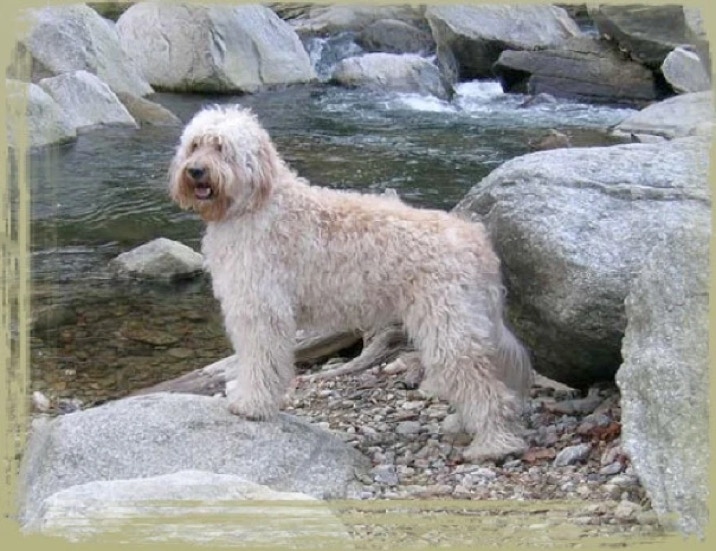
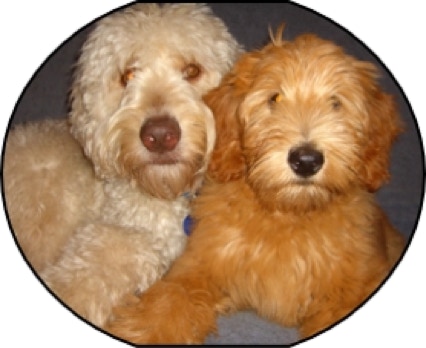
Breed Standard of the Australian Labradoodle
As established by Tegan Park and Rutland Manor Breeding & Research Centers of Australia and adopted by the Australian Labradoodle Club of America 2005.
Temperament and Soundness are the two KEY elements in a good family companion; they must not be sacrificed for any reason.
General Appearance: The Australian Labradoodle should be athletic and graceful, yet compact with substance and medium boning. Joyful and energetic when free, soft and quiet when handled. They should approach people in a happy friendly manner with eye to eye contact. Keen to learn and easy to train. They have a free flowing wavy or curly coat that does not shed and is possibly non-allergenic.
Size: Sizes are still "somewhat inconsistent" with no definition between male and female at this time. Accurate prediction of size, even by an experienced breeder, is not expected at this time. Size is measured to the top of the shoulder blades (withers) while standing squarely on a level surface.
Much care is needed when breeding both the large and small dogs. Large dogs can suffer from rapid growth that can lead to structural problems. Soundness is of utmost importance. Over size is a major fault. Care must be taken to keep the miniature Australian Labradoodle a solid athletic robust dog. The dwarfing of dogs can lead to many genetic and temperament disorders. Minimum size attention is of the utmost importance to maintain a healthy little dog. Most Australian Labradoodles will weigh more than their height reflects.
STANDARD: 21" TO 24" The "Ideal" size for a standard female is 21 to 23 inches and for a male 22 to 24 inches. Weight range tends to be 50 to 65 pounds.
MEDIUM: 17" TO 20" The "Ideal" size for a medium female is 17 to 19 inches and for a male 19 to 20 inches. Weight range tends to be 30 to 40 pounds.
MINIATURE: 14"TO 16" The "Ideal" size for a miniature is 14 to 16 inches with no correlation between height and sex of the miniature Australian Labradoodle. Weight range tends to be 16 to 25 pounds.
Body: Height to length ratio should be 10 to 12 (being slightly longer in leg than body) but still appearing square and compact. Shoulders should have good angulation with firm elbows held close to the rib cage. Hindquarters should be of medium angulation with short strong hocks. Top line should remain level with strong loin and level croup. Flanks should rise up from a brisket set just below the elbows, but should not be excessively deep. Ribs should be well sprung but not barreled. Overall, the dog should appear square, be balanced, athletic and with good muscling.
Movement: When trotting should be purposeful, strong and elastic, with good reach and drive, giving the appearance of "going somewhere". When happy, relaxed or at play will prance and skim the ground lightly. Excessive tightness in the hips will produce a stilted action and is considered a fault.
Tail: Set relatively high and preferred to be carried in a saber, can be carried below the topline or "gaily" above. Curled possum type tails are undesirable.
Head: Sculptured, broad, well defined eyebrows, medium stop, eyes set well apart, nose to eye slightly longer than eye to occiput. The head should be clean and chiseled and fully coated as on the body, legs and tail.
Ears: Set moderately flat against the head, base should be level with the eye. Leather should be of medium thickness and when gently drawn forward should reach the top canine tooth. Ear leather reaching beyond the tip of nose is considered a severe fault. Ear canals should be free of excessive hair, and not thick and bulbous. When inquisitive and alert the ear set should rise to the top of the head. Thick/heavy ear leather is a fault.
Eyes: "Slightly" round, large and expressive, always offering eye to eye contact when engaged in activity with a human. Protruding or sunken eyes are a fault. Watery or tearful eyes are a fault. Wide round or narrow almond shaped eyes are considered a fault.
Eye Color: Eye color should complement and blend with the face color. Black, Blue, Red, Dark Chocolate and Silver dogs must have dark brown eyes. All shades of Cafe', Milk Chocolate, Gold/Apricot, Cream and Chalk should have dark hazel to brown eyes if they have black pigment. Caramel and dogs with rose pigment may have either dark eyes or "ghost" eyes. Ghost is a hazel color range much the same as it is in humans. Flecking with different shades of hazel with green and a blue/green make this eye color quite unique. Ghost eyes must always remain soft in appearance. Cold staring expressionless appearance in all eye colors is a severe fault.
Teeth: Scissor bite only is acceptable, being neither undershot nor overshot. Miniatures must not have crowding teeth.
Nose: Large square and fleshy. Pigment: Black or Rose. Pigment should be strong. Black pigment dogs must have dark brown eyes. Pink spots or patches on nose, lips, eye rims or pads are a fault. Dogs with rose pigment can have dark hazel, brown or ghost eyes. Eye rims should be rose as should nose, lips and pads. Pink spots or patches are a severe fault. Rose should be a rich liver color.
Neck: The firm, well muscled neck should be moderately long, slightly arched and flow into the well angled shoulders with no appearance of abruptness. The neck should not be coarse nor stumpy and should lend an air of elegance to the dog. A short thick neck is a fault.
Color: Any solid color including Cafe' and Silver is preferred. Minimal white on the chest and toes is acceptable. Light chalky coarse hairs (kemp) sprinkled through a dark coat is permissible but very undesirable. Parti (patched) and Phantoms, though undesirable, are considered an acceptable color. Parti can be any color (except Phantom) with white on face, head and/or body. Phantoms are any shading or two tone coloration such as a Black dog with lower legs showing a soft toning of silver or gold or a dog born dark with a golden shading at the roots or a slight brindling effect. True pure solid colors with the exception of Silver and Cafe' are highly prized and are the ideal for the Australian Labradoodle. It is normal that all colors may show bleaching and discoloration over the top coat. This is called sunning and is quite expected and acceptable, as the Australian Labradoodle is an active dog and often a service dog that enjoys the outdoors. Weather bleaching or sunning must not be penalized.
The Breed Standard of Excellence colors are:
Apricot/Gold, Red, Black, Silver and Blue - must have black pigment
Caramel, Chocolate, Cafe', Parchment and Lavender - must have rose pigment
Chalk (appears white but when compared to a true white it is a chalky white) - may have rose or black pigment
Cream and Apricot Cream (all shades and combinations of cream shades are acceptable) - may have rose or black pigment
Caramel: A rich Gold/Apricot very much the color of its namesake - caramel through to a deep red - must have rose pigment.
Red: A solid, even, rich red color which should have no sprinkling of other colored fibers throughout the coat. A true Red must not be lighter at the roots than at the tips of the coat. Red can fade somewhat with age, and senior dogs showing paling of coat should not be penalized.
Apricot/Gold: The color of a ripe apricot on the inside. A true Apricot must not be lighter at the roots than at the tips of the coat. It can come in varying shades and may fade as the dog grows older. Senior dogs should not be penalized for paling of coat color.
Blue: A dark to medium smoky Blue. Blue also belongs to the Rare Color Group. Blue dogs are born Black but will have Blue skin and undertonings at a young age. Any other color throughout the Blue is undesirable.
Silver: Born Black but will have more of a grey skin and will develop individual silver fibers at a young age. Silver dogs can take up to 3 years to color out and become a beautiful smoky grey through to a light iridescent platinum and varying shades in between at adulthood. Uneven layering of color in the silver is normal.
Chocolate: Dark and rich, born almost Black, they maintain a dark chocolate throughout their lifetime. Color should be even. Any other color throughout the Chocolate is highly undesirable. Chocolate belongs to the Rare Color Group.
Cafe': Born Milk Chocolate of varying shades, and have the same gene as the silver dogs, often taking up to 3 years to fully color out to multi shades of chocolate, silvery chocolate and silver throughout. When given plenty of time in the sunshine, they develop stunning highlights.
Lavender: A Definite, even smoky lavender chocolate, giving almost pink/lilac appearance. Lavender dogs are born Chocolate and can be difficult to distinguish at a young age. Any other color throughout the Lavender is highly undesirable. True Lavender belongs to the Rare Color Group.
Parchment: Born Milk Chocolate, will pale to a smoky creamy beige. Paling usually starts from an early age often as early as 6 weeks. As adults they can be mistaken for dark smoky Cream from a distance. Parchment belongs to the Rare Color Group.
(Reprinted from the Australian Labradoodle Club of America)
Copyright © 2005 to Infinity; Tampa Bay Australian Labradoodles llc. All rights reserved.